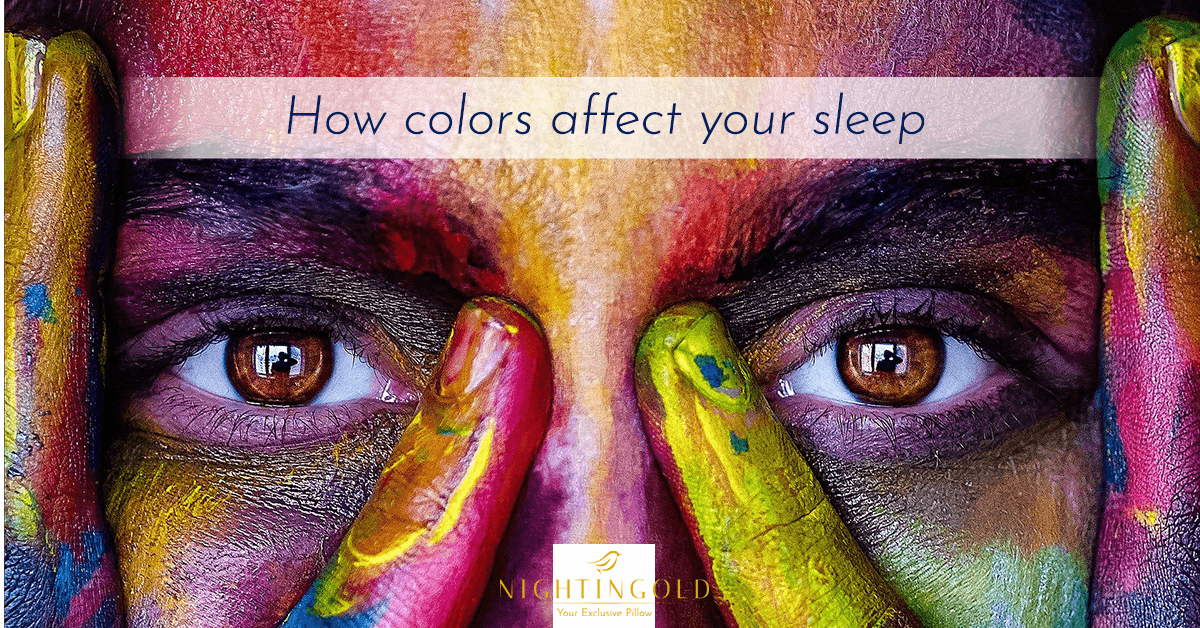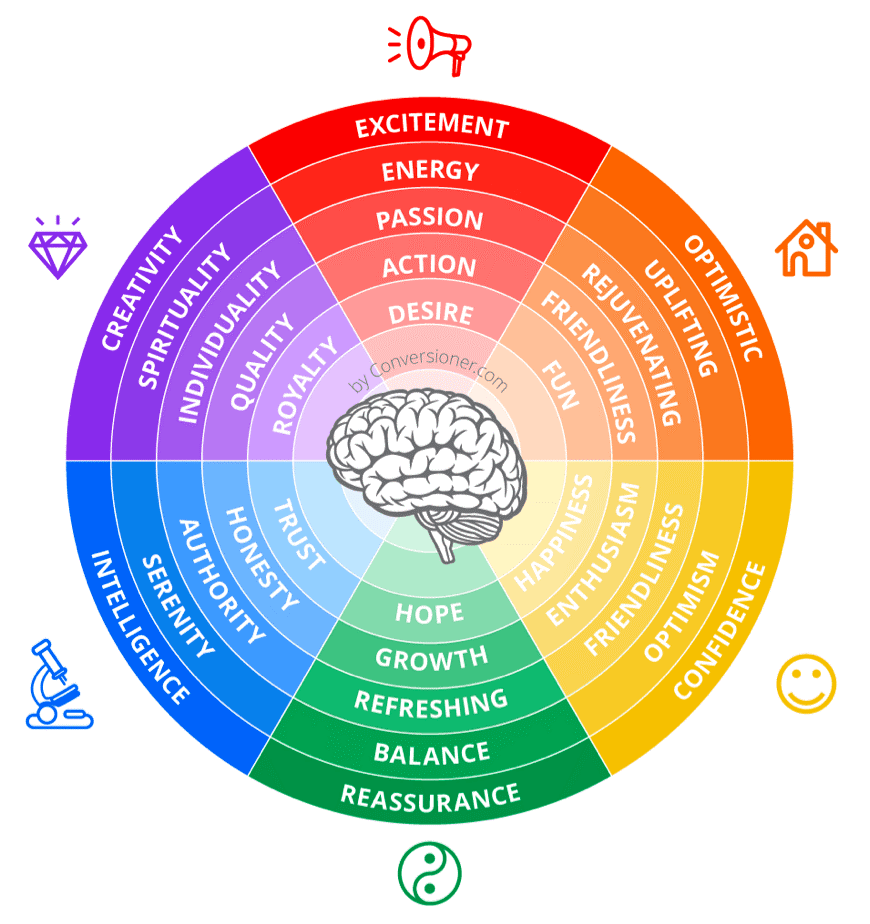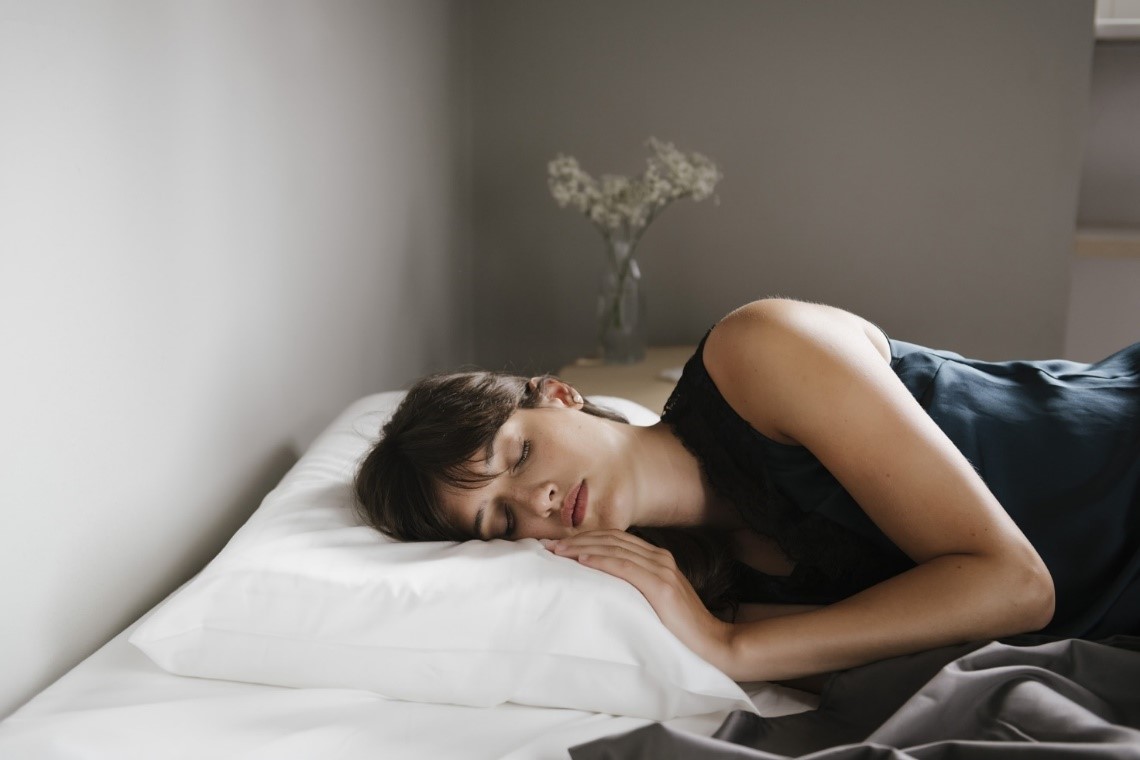Colors and quality of sleep: what’s in common between these 2 words that appear so different?

Have you ever heard about the power of the colors on your sleep? Did you know that the choice of the color in your bedroom walls can negatively impact the quality of your sleep?
Let’s understand how.
The power of colors
Color is defined as the way in which objects are able to emits or reflects light, offering on the eye different sensations and producing on the brain different reactions.
Every marketing guru knows that colors are like magic: can influence your emotions and your state of mind, your mood and the way you behave. And that’s not all.
It’s scientifically proven that colors have a direct impact on blood pressure and heartbeats.
Here following you can find a graph to show you the link between colors and emotions. Red color, for example, increase passion, even anger, and excitement.

Colors and the quality of sleep
If color is powerful enough to influence mood or increase blood pressure, then how much is color affecting our sleep?
Sleep is not just rest, it is also how our body repairs, revives and re-energizes for the next day.
Read more about it: The importance of a good night’s sleep
Not many would consider it. A good night’s sleep can be affected by your surroundings just as much as it can be affected by your physical being, particularly if you constantly struggle to fall or stay asleep, then changing your bedroom color could help you get better rest at night.
Providing the correct colors in the room is an important factor when looking to increase sleep quality. Most bedroom paint colors, if used correctly, can be a great addition to a restful room. With others, try to rest can be a mess!
The best colors for a deep rest
Utilizing proper colors for the wall of your bedroom id a factor that you shouldn’t under evaluate when you are struggling to improve the quality of your sleep.
In fact, when using the proper ones, you will receive an unconscious sensation of wellbeing and relax, that’s very useful when speaking about quality of sleep. Viceversa, there are some colors that can really disturb your rest.
So what’s the “magic” color when it comes to bedroom hues?
A study of over 2,000 Travelodge hotels helped determine which colors help and hurt sleep (, and give us valuable insights on how room color can influence your sleep, mood, and even sets the tone for your living environment.
Analyzing 2,000 homes to investigate the influence of bedroom color schemes against the quality and quantity of sleep they are getting every night.
Results are astonishing. Some colors have been declared the best ones, while others must be avoided. Before looking into details, let’s share some general rules underlined from the research.
It has been observed that toned down or muted shades of the same color promote better sleep than more vibrant primary ones.
It is also recommended to use a flat finish over glossy. This helps colors appear softer, and softer means sleepier.
Here you are: a list of the best colors that have been considered the best ones for your sleep.
Blue
Blue is the best color for the walls of your bedroom.
Research has found that people who have blue bedrooms fall asleep more easily because of the calming properties of the color.
In fact, this kind of color owns calming properties, even helping to reduce blood pressure and heart rate, which are essential in achieving a good quality night’s sleep.

Nature offers several several calming things associated with blue: from a clear sky to a waterfront. In the same way, a blue bedroom is also conducive to sleep.
A light or pastel blue is a great base color to paint walls while including some secondary colors as accents.
With the color blue being so inviting and friendly different shades could also be used if no accent color is desired. Setting up the room to look like a sky or a beach can also amp up the relaxation factor.
But why the blue color?
The reason has a whole lot to do with your eyes.
Specialized receptors in the retina of your eyes, called ganglion cells, are responsible for relaying information to the part of your brain that controls your circadian rhythm. This communication impact the functioning of your body, as well as sleep cycles (discover more about sleep cycles functioning).
It seams that these ganglion cells are most sensitive to blue. When picked up by your ganglion cells and relayed to your brain, helps reduce blood pressure and heart rate, all of which help you receive a solid night’s sleep.
Yellow
The second most favorable color scheme for inducing a good night’s sleep is yellow, as it is an upbeat and pleasant color.

Yellow provide good vibes and happy energy. This causes a better sleep as it gives a positive spin to dreams and relaxation periods.
Yellow stimulates the nervous system which aids relaxation, while also creating a warm and cozy atmosphere.
Paler and lighter colors yellows are suggested and are recommended in moderation, as they are on the warm color palette and have the potential to warm up the room if not careful.
Pairing yellows with grays is a popular combination as they compliment each other and are both colors that help you sleep.
Green
Green is a color associated with nature. Think grass, gardens, trees. And as we all know, nature is calming and soothing more than anything else.

In terms of Feng Shui, the green natural color is linked to love, marriage, positive energy, reputation, and fame. These are all very positive elements.
Therefore green color help your body in relaxing and calming, achieving the deepest cycle of your sleep. Which is best for feeling well rested in the morning.
When paired with other shades of white or honey, green makes a bedroom inviting and restful, and makes you want to go to sleep right away
Green it’s responsible, therefore, of a restful, calming environment which helps relaxation which is essential in inducing sleep.
Light grey / silver

A silver bedroom/décor is the fourth most popular sleep inducing color scheme . It seems like a strange color, but people who have silver bedrooms feel that they are soothed by the metallic tones.
Additionally, the colors of silver and gray can help mimic moonlight, which signals to the body that it is time to sleep.
But pay attention! To let that body signal work, it is important to keep places of rest for primarily that without spending too much time in bed while doing other things (like watching tv, playing video games, or eating).
Moreover, the color is usually associated with a gloomy, rainy day when you just want to stay in bed. Painting your bedroom gray could have the same effect, helping you sleep more easily and feeling more refreshed.
Orange
An orange bedroom is the fifth most popular sleep inducing color.

Shades of orange add warmth to the room and help create a stable and reassuring atmosphere. It seems the orange color can even help digestion too, especially when eateing a large or late evening meal.
Though one may think orange is an aggressive or louder color, it is actually used to promote relaxation, specifically for the muscles. It is important to not overuse the color in the space, it is much better used as an accent.
As blue and orange are complementary colors and pair great together, they can be used together to promote both relaxation and tranquility, making for a great area of rest.
Pink
If you thought pink is only for children and women, you need to open your eyes.

Time and again, pink has featured on the list of restful bedroom paint colors, and not without reasons.
Pink is one of the most calming colors, known to promote feelings of joy and peace. It contributes to the quality sleep that is commonly desired
When barely-there pink is mixed with other colors like white and silver, it creates and soft and pretty look for the room.
But pay attention. As other colors that include the color red in the making, it is important to stay away from any pink that is too deep, or anything that gets closer to red on the color wheel. It is better to stick with paler and lighter shades to keep the room soft and inviting.
Lavender
Another soothing color from the purple family, lavender has been found to boost rest at nighttime.

Lavender is also known to boost creativity, so waking up in a lavender room could lead to a more productive day.
Deep purple can give a feeling of luxury that can promote sleep in the sense of safety and security.
Additionally, the darkness of the color can help remind the body that when it is dark it is time to sleep. But pay attention. As explained for the grey, to let that body signal work, it is important to keep places of rest for primarily that without spending too much time in bed while doing other things (like watching tv, playing video games, or eating).
When paired with white, lavender makes pretty bedroom décor while also promoting calm.
Purple is also a great addition to blue schemes as they partner well together.
The unappropriated colors
In contrast, the study also revealed the least favored bedroom color schemes for obtaining a regular good quality night’s sleep.
Red, brown and dark grey seem to be the worst ones. Using these colors in your bedroom are also more likely to promote vivid dreams or even nightmares; resulting in fragmented sleep and you feeling tired the next day.
Although the paint colors alone cannot guarantee proper sleep, they do have a certain impact on the quality of sleep.
Creating a serene and restful atmosphere in your bedroom could actually help you get better sleep every night.
in addition to that, choose to adopt proper behaviors to guarantee to tour body the best conditions to reenergized yourself. Make a check to the body position you assume during the night e try to understand if the pillow you are utilizing is supporting you in the best way. Learn more about the sleeping positions and the impact on your health.
Remember: Take care of your sleep means taking care of your health.
Nightingold works daily to improve rest experience of each of our client, offering a special service to create tailor made pillows, based on needs and desires.
Discover the world of Nightingold and his revolutionary tailor made service
We can help you in solving your sleep disease and improve the quality of your life.
For any information don’t hesitate to contact us, click our Nightingale!
We are happy to put at your disposal our knowledge.
